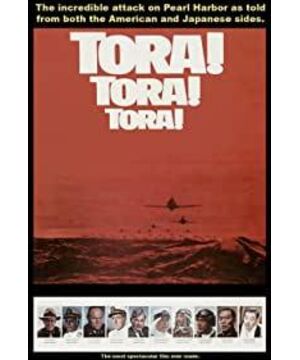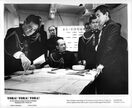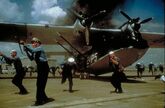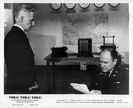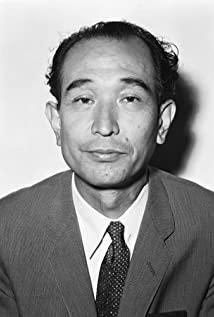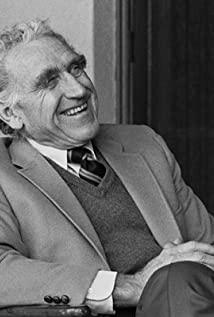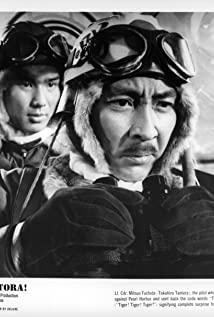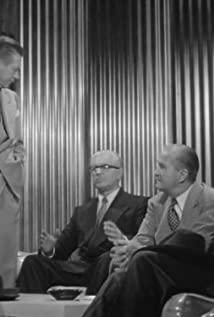I don’t know when it started, war movies, or epic war movies, have basically disappeared from the screen, replaced by the entire war from the perspective of individuals or small groups. It cannot be said that this form is not good, but that requires a strong script and unparalleled ability to mobilize characters and plots, and the length cannot be small. Brother company is typical, but it takes more than 20 hours to show the majestic panorama of Allied paratroopers fighting on the western front from the perspective of a company. The same is the subject of the attack on Pearl Harbor. In 2000, Michael Bay’s "Pearl Harbor" produced a correspondingly negative example. The historical event has completely become a background for the love triangle of several little people who are insignificant in this event...
So, when another (and every) Pacific War is coming, the first movie that comes to mind is this movie. "Tiger!" co-produced by the United States and Japan in 1970 Tiger! Tiger! ". As an avid fan of World War II history, especially fans of the Pacific War, plus movie fans. "Tiger! Tiger! Tiger! "Is undoubtedly a classic in my heart, there is no one. If I only allow me to watch one movie in the rest of the time, then it is "Tiger! Tiger! Tiger! ".
This film is one of the few wonderful works that show the historical events of World War II in a panoramic view. Although the film length reached two and a half hours, there was no sense of procrastination at all. The first half of the battle came, and the strong sense of pressure from the wind and rain made the audience, at least me, breathless. In the second half of the sea and air battle, whether it was scenes, props, fireworks, special effects, and even models, it almost perfectly presented the kind of war in the early stage of the Pacific War. Although computer technology can now put almost anything on the screen, it has to be said that any special effects are clouds in front of real airplanes. Even if it is the 1997 naval attack modified with a trainer aircraft such as AT6... The huge aircraft formation that Fox has transformed for the filming of this film even exceeds the size of the air force of many small and medium-sized countries. Until 30 years later, Hollywood was still using these planes to shoot Pearl Harbor. Correspondingly, in Pearl Harbor, a retired Forester-class aircraft carrier was used to reverse the Japanese flag to "pretend" the United Fleet Akagi aircraft carrier on the port side of the bridge. It can be seen that for large weapons such as warships, once they are demolished, it is very difficult to reproduce them.
Actually "Tiger! Tiger! Tiger! "There is also the problem of large warships. The method used in the film is model shooting. In a series of right-wing model dramas shot in Japan, this has long been a common bridge segment. So "Tiger! Tiger! Tiger! "There is still a slight flaw in this aspect. After all, the model cannot simulate a battleship of tens of thousands of tons... (this point was solved by computer stunts in Pearl Harbor, but in the background, the Newport-class tank landing ship And the flames rising from the Spruance-class guided-missile destroyer made me eat flies again.) However, the several night shots of the Nanyun Mobile Force were quite good.
"Tiger! Tiger! Tiger! "In my opinion, the most exciting part is the preparation for the sneak attack in the first half. This preparation uses an acceleration method. The initial axis agreement was a few years ago, and then as time approaches December 8 , Incidents are getting more and more dense. More and more characters appeared on the stage, as if the drums of war were beaten more and more densely. On the one hand, all kinds of intelligence on the United States have gathered together, and the possibility of being attacked on Sunday has become more and more obvious. However, the long-term isolationist plot has made many units or individuals from top to bottom have a natural sense of the coming of this kind of danger. Ignore. On the other hand, Japan is constantly stepping up its war preparations, from Yamamoto's decision to Kurojima's plan. From the controversy of the combined fleet to the shining debut of Genta Futta and others. If there is any flaw in this paragraph, it seems that it is not obvious to explain the situation in the entire Pacific region. It seems that Japan is putting the war noose around the neck of the United States. In fact, this is the inevitable result of the containment of Japan by the ABCD encirclement led by the United States. If Japan wants to continue its war of aggression against China, it will inevitably challenge the vested interests of the United States and Britain in the Pacific. But this is of course Japan's own fault. When the United States imposed an oil embargo on Japan, it was already declaring war on Japan. If the film can better explain this background, then the first half of the foreshadowing link will be more perfect.
Ma is going to get off work, so let's stop here first. Continue in the evening.
Let's talk about the characters in the film. As an epic film, it is necessary to have many characters. There are dozens of characters on both sides every day. For ordinary audiences, it may only be able to distinguish which one is American and which one is Japanese. Therefore, it is very interesting to identify the characters and historical figures in the play. In addition, because some directors in the United States and Japan are different, there are obvious differences in the characterization. The American characters continue the same style since the war films of the 1960s. They are like walking from the longest day, from the distant bridge. Similarly, the Japanese characters also have the distinctive characteristics of the Japanese naval movies at that time, although there is no " what! In the Navy, Ichiro Hirata has a distinctive personality and a bit perverted character, but from Fubuta, Yamaguchi and others, it can be clearly seen that he is different from the Americans.
Speaking from a high level, the national capitals of the United States and Japan did not appear. On the United States side, the Secretary of State, Secretary of Defense, Chief of Staff Marshall, Secretary of Naval Operations Knox and others appeared. It may be due to the needs of the plot. It will make the audience feel that Knox did not notify the president in time, because Marshall rode horses in the morning and did not contact in time... The attack on Pearl Harbor was completely unprepared. As a high-level military officer, he was of course responsible. Yes, but the United States still appears to be more tolerant in this regard. Kimmel, who was unlucky, seemed to be unlucky after the war. In addition, two US intelligence officers played a lot in the first half. Especially the naval intelligence officer, he felt that he was the only one who really valued intelligence, but unfortunately his rank was limited and his influence was limited. In terms of the military, the Navy’s Pacific Fleet Commander Kimmel is still working hard to improve Pearl Harbor’s combat readiness under his own authority, and when he saw that the fleet was finally destroyed, that kind of despair was still in place, which was given to me. It feels like an old hen who sees her children being killed. On the other hand, it is the army. On the one hand, General Xiao parked army aircraft in a concentrated manner in order to prevent infiltration, which caused heavy losses in the air raids. It didn't work. In addition, Halsey also has many scenes in the film. "Unprecedented good command" and "He is a donkey to a horse's mouth, not right at all" are the most impressive lines in the film. Although Jeff and Danny were not brave enough to open the plug-in in Pearl Harbor, the young captain of the Ward and the pilots who were evacuated performed their duties well before and after the airstrike. They are the future Pacific Ocean. The real protagonist on this battlefield, the combined fleet is destined to be wiped out in the hands of these people.
Looking at the Japanese characters, because the directors are different, the opposition between the characters on the two sides is particularly obvious. This can be regarded as the most attractive part of the film. The first person to appear was Yamamoto's 56th Grand Prix, who was appointed as the Commander of the Joint Fleet. As a representative of the treaty and his great reputation in the navy, Yamamoto's appointment as Commander of the Joint Fleet can be seen as the Japanese Navy's move to war against Britain and the United States. An important part of the road. Yamamoto’s actor, Satoshi Yamamura, has passed away for more than ten years. Although he is not the royal Mifune Toshiro, the village is still very close to Yamamoto in appearance and temperament, but he is a bit taller and handsomer than Yamamoto. Another important role is the landlord Hideki Tojo, nicknamed the razor. The arrogance of being domineering and not putting the government, navy, or even the emperor in the eyes of the government, and even the emperor, performed well. Especially when he stood in front of the map of the Pacific Ocean, stretched out his hand and grabbed it, as if the Japanese army had already swept Southeast Asia...
Then there are the front-line navy personnel, who focused on describing the commander of the mobile unit, Nanyun Tadaichi. In fact, Nan Yun was born in a mine warfare unit, and he didn’t know much about flying. At the beginning of the war, the Japanese army meticulously prepared for the war and made all the best. It can be regarded as sweeping the Western Pacific and Indian Ocean. The victorious fierce general, even Yamamoto felt that "Nan Yun, this old boy, finally got his hands on..." In fact, this is all appearance, and his flaws can be seen from the sneak attack on Pearl Harbor. This person can be used for defensive operations. His first priority is not to annihilate the enemy but to preserve himself. The typical existence of the fleet doctrine. It was for his reason that the third wave of attacks was cancelled and the naval oil depot and ship repair yard in Pearl Harbor were preserved. It was also considered that the first nail was nailed to the coffin of the Japanese army's final defeat. After the fiasco of Midway Island, he will have to end up with an abdomen. There is also a character who is regarded as the first perverted staff officer of the Black Island Turtles of the Showa Navy. He, nicknamed "Gandhi", is called a super workaholic. The specific plan for the attack on Pearl Harbor was designated by him. Finally, I have to mention Mizuo Fuchida. As the commander-in-chief of the air attack on Pearl Harbor, he participated in all the operations of the Japanese naval mobile units that knew Midway from the start of the war. Fortunately, he survived the war and traveled to the United States as a missionary. It’s a bit nonsense to be a missionary. ... His experience is too important for future generations to study the history of the Pacific War, especially the Pearl Harbor incident. After the film took off from the Japanese aircraft formation, those scenes were basically reproduced from the scenes in Fuchita's memoirs. The aviation staff, such as Futta and Minoru, are always so vigorous and energetic in the film. From then on, "The captain is back!" At the beginning, the feeling of the Japanese right-wing model drama was so strong, as if the film had become "Ah! "Navy" became "Combined Fleet". Nowadays, many women are also starting to pay attention to war films. I think if they watch this film, they should appreciate the character of Futta. From the moment he showed Yamamoto’s telegram, saying, "Maybe I didn’t do a good job..." (In fact, this is a typical downgrade use, let him lead the team as a backbone of the business), to the crazy training he led the team, and before the departure Saying goodbye to Minoru Genta's basic feelings, and the confusion and anger after returning to the voyage, all set off this character so tall... This is also the affirmation of the contribution of the historian to Futsuta?
Finally, let’s talk about battle scenes and props...
The battle scenes, due to the shooting time, the war scenes of the 1970 war film were of course not as hot as Pearl Harbor in 2001. The fighter plane exploded in the sky, the battleship mast fell in front of the camera, and the famous bomb perspective, none of these can be realized. Moreover, the shots of some surface ships still looked like models during the bombing. But there are still some bright spots in the battle scenes in this film.
First of all, the picture is more rigorous. Since the Pearl Harbor incident is less than 20 years away from the filming of the incident, many people who have witnessed it can give reference and have a lot of information to check. Therefore, the composition of the Japanese air fleet, even to each aircraft The serial number can be easily found, and the Japanese offensive process also has a very detailed introduction. Of course, the film can't cover everything, but the big scene is still very good. For example, the takeoff at dawn, if you look closely, you can see that the number of the aircraft appears in the lens, which is basically in line with history, especially the red and yellow vertical tail of the commander Fujita. There are also various procedures, semaphores, passwords, etc. before the mobile unit takes off. The formation after takeoff. In the formation on the way to Pearl Harbor, you can clearly see the fighter planes covering the top, and the torpedo planes and bombers lined up in a neat formation. Compared with the planes that flew around at Pearl Harbor, the class is more than a little bit higher.
-------------------------------------------------- -------------------------------------------------- ---------------------------------
Update 2016-12-9. What’s
interesting is that this film is also based on an American aircraft carrier Playing as a Japanese aircraft carrier, it’s just that the Essex-class is considered a World War II aircraft carrier anyway, even if you don’t know the fucking one.
The air raid was launched at 8 am. According to Fuchita’s memoirs, he used a signal flare to indicate whether the combat plan was a surprise attack or a force attack. However, to let the fighters understand, he fired two "single-shot" flares. Blaming Takahashi for the "little thief". In any case, the torpedo plane and the dive bomber started the attack at the same time. The film showed that the fighter jet fired the first shot, and then the bomber passed the battleship Nevada at low altitude. The two officers on the shore also expressed that they would punish the pilot who violated the safety regulations. As a result, the bomb exploded. The two rushed into the building and sent the famous telegram that "Pearl Harbor was attacked. This is not an exercise." There is an allusion here, because before the war, Pearl Harbor often broadcasted "Pearl Harbor was attacked by air, this is an exercise." Therefore, the real air strike must also be explained clearly. The battle scenes of air raids were basically the average level of war movies in the 1960s and 1970s. Now it seems that the pace is a bit slow, and the fireworks explosions are not so powerful. However, I may also love the house and the Wu. I think Hu Hu Hu did a good job. Some ancient war films of the same period, such as the Spartan 300 Warriors in 1962, didn’t care about fighting at all, and felt like playing with children. It was similar to the later Pearl Harbor process, of course I think Michael Bay must have watched this film. The approximate process of the air strike was bombing/lightning strikes on battleships, air combat by sailors on the warship, the voyage of the Nevada, air strikes on the airport, the B17 accidentally entered the battlefield, and the surviving pilots counterattacked these several stages. Of course, Huhuhu did not show the bombing of the Arizona ammunition and the overthrow of Oklahoma like Pearl Harbor. It is estimated that it is not good to shoot with a model. The voyage of Nevada was well shot, at least it clearly showed that a battleship was sailing and fighting. Because according to the memories of many veterans, the voyage of the Nevada in the port that morning left a deep impression on many people. The air raid on the airfield section can also distinguish the army airfield and the naval airfield on Ford Island. For example, a fire truck with the words Ford Island can be seen in the camera, and there are lines explaining that the fire hose on Ford Island has been crushed and cannot extinguish the fire. As for the army airfield, perhaps out of cost considerations, the bombed fighter jets are all P40. In fact, there were still many P36 and P26 in Hawaii at that time. Of course, it was meaningless to show so many models. However, these P40s are ready to hit and fall apart immediately, and they look like papers. They should all be made of wood, and there should not be many real airplanes. Several planes were forced to take off one after another under gunfire, but they were all destroyed on the runway. The first few times I saw these scenes, these scenes were very shocking. It is now suspected that some aircraft were towed on the ground and then blasted away. There is also a scene in the airport section. It is recalled that there was an explosion at the shooting scene, so the staff who ran away were genuinely running for their lives. The shooting of the B17 aircraft group strayed into the battlefield was also very exciting. Among them, the pilot's right landing gear could not be put down. The single-wheel forced landing was from a documentary shot taken during the war. A closer look can see the slight change in picture quality. Finally, two planes took off to meet each other. Are these two later the prototypes of Danny and Leif? In short, the two P40s achieved some results, and the air strikes were basically over.
Fuchida, who returned home, desperately hoped to launch the second wave of offensive, which should actually be the third wave. If there is a third wave of attacks, perhaps the naval shipyard and oil depot will be over. But the attack on Pearl Harbor was a surprise attack after all. From the early morning to close to noon, I drifted for so long in a place as far away as the base camp. It is estimated that Nanyun was under great pressure at this time. Since he achieved more than expected results, he quickly closed it. hand.
Of course, we now know that the Enterprise, which is supporting Wake Island, is actually not far from the maneuver unit, but neither side is aware of the other's existence. In fact, once they discover each other, it is estimated that the Enterprise will be tragedy on the spot. After the reinforcement mission is completed, there will be fewer aircraft. In the morning, the Enterprise also released all the carrier-based aircraft before entering the port and let the aircraft return to Pearl Harbor. Then the aircraft carrier enters the port again. The same is true for the U.S. Navy aircraft carriers now, and the aircraft carriers entering the port are often empty. So if the mobile unit can reach the Enterprise after Fubuta returns, then... and unfortunately, when the carrier-based aircraft on the Enterprise reaches the sky over Pearl Harbor, shortly after the end of the air strike, the ground artillery unit is in a state of nervousness, so These unarmed U.S. aircraft suffered heavy losses, but fortunately, there were few casualties among the pilots. But this must not be shown in the movie.
The final film ends with Yamamoto’s contemplation on the Nagato. This section left a deep impression on me when I was a child. As someone in the comment section said, with the spirit of hindsight, Yamamoto reflected on Japan’s strategic decisions. I expressed concern about the future. In fact, we know that there is something to worry about. Anyway, we must be defeated...
View more about Tora! Tora! Tora! reviews


